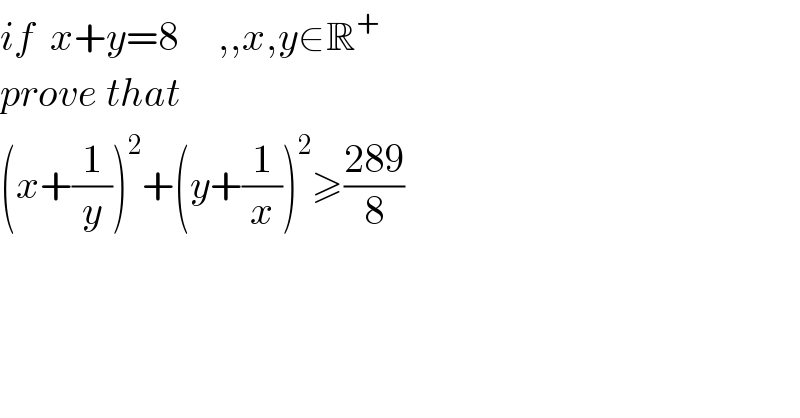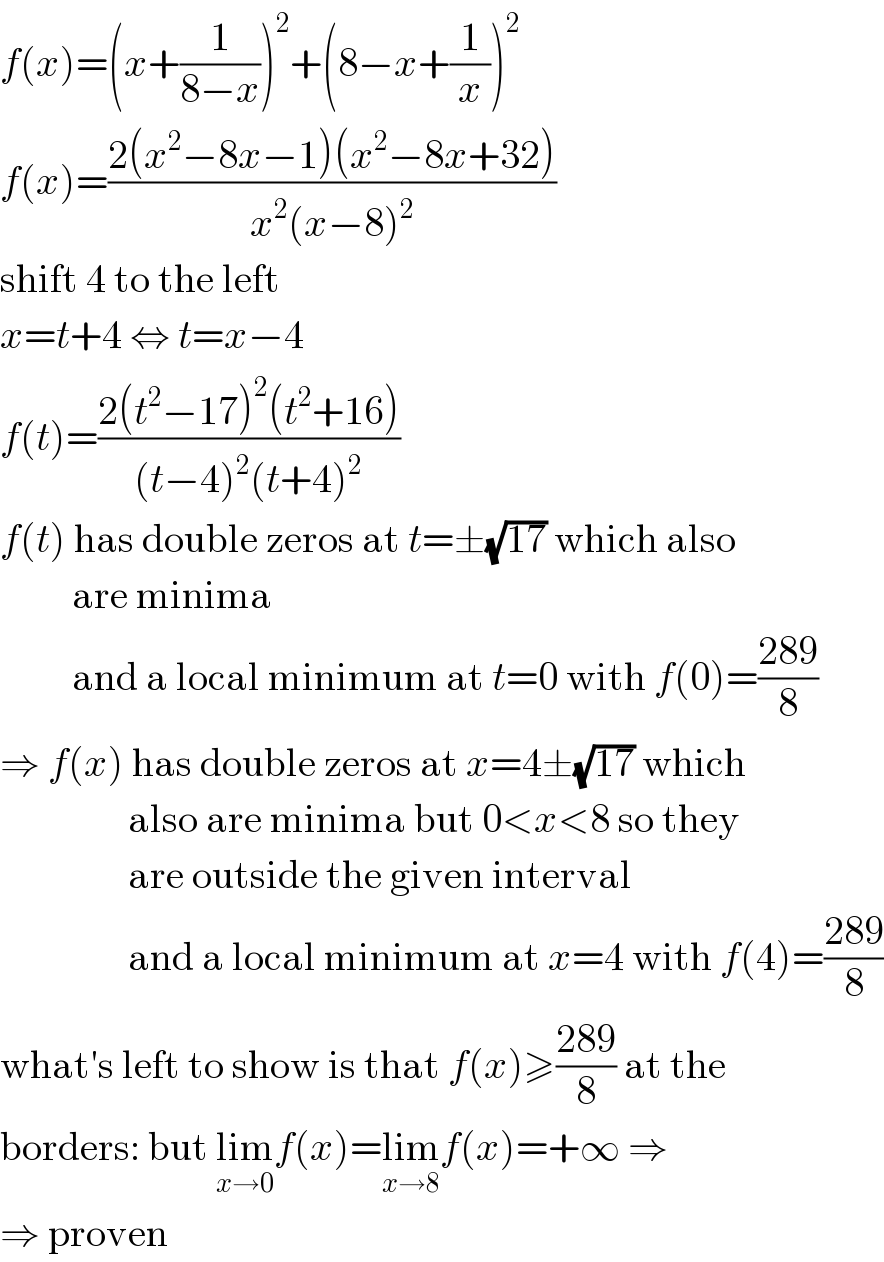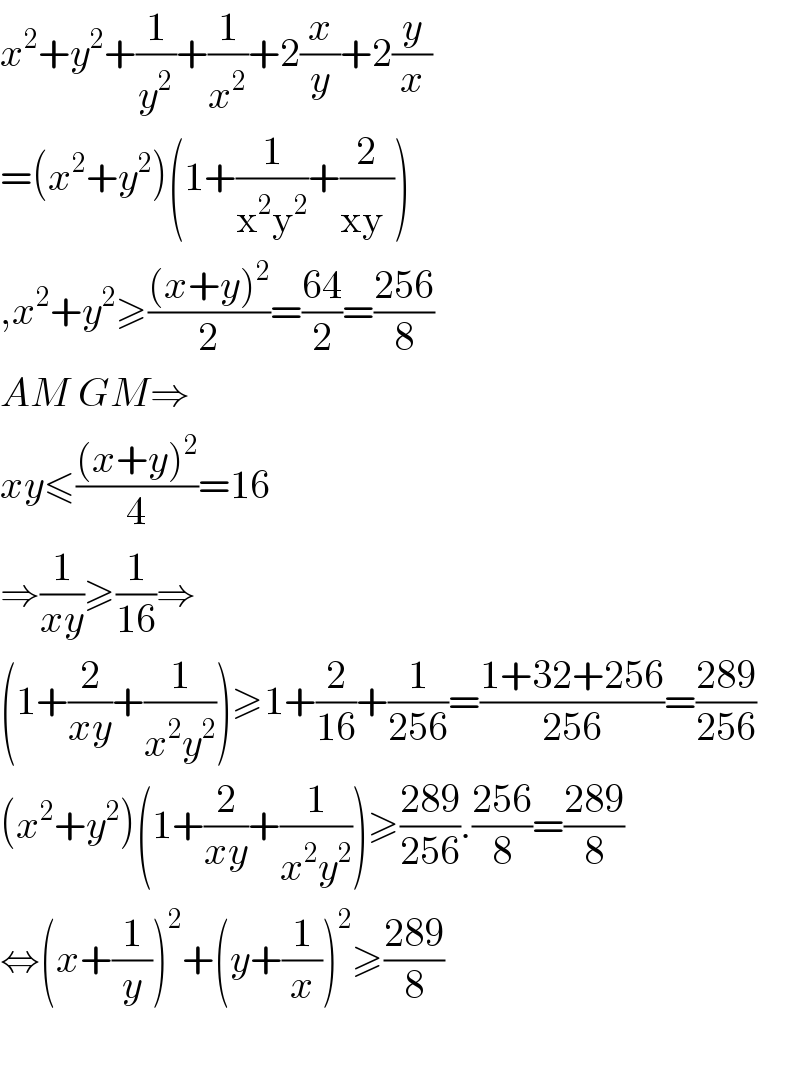
Question and Answers Forum
Question Number 82375 by M±th+et£s last updated on 20/Feb/20

Answered by MJS last updated on 21/Feb/20

Answered by mind is power last updated on 21/Feb/20

| ||
Question and Answers Forum | ||
Question Number 82375 by M±th+et£s last updated on 20/Feb/20 | ||
 | ||
Answered by MJS last updated on 21/Feb/20 | ||
 | ||
| ||
Answered by mind is power last updated on 21/Feb/20 | ||
 | ||
| ||